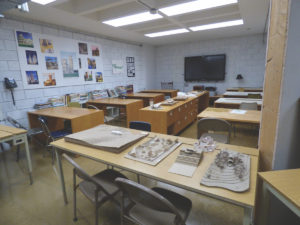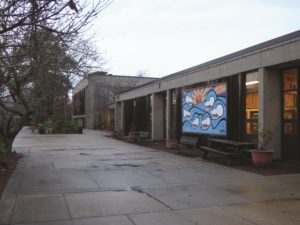EASTHAM — Members of the Nauset Regional School Committee have taken issue with a report on the high school building project that asserts that eliminating — or substantially reducing — the school choice program could save between $4 million and $5 million a year in operating costs.
The calculation was included in an unsigned document published online last month and titled “Subcommittee Report to Brewster FinCom Finalized January 2021.” The members of the subcommittee are not named, either in the report or on the Brewster town website, but the report has been cited by critics of the proposed $132-million renovation, including in an op-ed in the Feb. 11 issue of the Independent by former school district treasurer Bill Dugan of Wellfleet.

Nauset School Committee Chair Chris Easley said last week that the Brewster report is misleading. “I challenge the committee in question to get an accountant to certify their analysis,” he said at the committee’s Feb. 11 meeting.
“I don’t know where anybody comes up with the $5 million,” said school committee vice chair Judith Schumacher. Schumacher said that amount would represent the salaries of more than 50 teachers. Estimating that between the middle school and high school the district employs 135 teachers, she said, “I really don’t think we can get rid of half of our staff.”
Opponents of the high school renovation plan argue that Nauset’s high percentage of school choice students is driving the scale of the project, which is planned for 905 students. The high school’s enrollment last year was 921, of which 219 students, or 24 percent, came through the state’s school choice program. Opponents argue that the choice program should be phased out and a smaller school built.
The Mass. School Building Authority has approved a $36.6 million grant for the renovation, which would bring its cost down to less than $96 million for the four towns of the school district, Brewster, Orleans, Eastham, and Wellfleet. The state grant is contingent on a favorable vote on the project at a district-wide election scheduled for March 30. Lawn signs supporting and opposing the renovation (or “expansion,” as “vote no” signs refer to it) have been popping up in the four towns.
The 16-page Brewster finance subcommittee report uses 2018 data from the Mass. Dept. of Elementary and Secondary Education (DESE) to calculate a per-pupil cost based on that year’s expenses of $29,551,080. That figure includes costs of all school district departments for both the middle and high school: administration; operations and maintenance; teachers; benefits and fixed charges; pupil services; guidance, counseling, and testing; instructional materials and technology; professional development; other teaching services; and instructional leadership.
In 2018, the Nauset district served 1,468 students, and, according to the DESE, the per-pupil cost was therefore $20,130.
The Brewster finance subcommittee report came up with a higher per-pupil cost of $25,162 “per member town pupil.” The authors then take the difference between the two figures, $5,029, and multiply it by the number of in-district students to arrive at $5,139,506. This amount, they assert, represents the “total annual subsidy burden to member towns.”
The authors then adjust that total downward to $4,724,579, deducting $414,927 to account for students from Truro and Provincetown, who are not school choice pupils but whose tuition is paid by the two towns under an agreement with the Nauset district.
The bottom line, according to the report, is that the district would save about $4.7 million per year without having to “subsidize” school choice and tuition students.
“These are not made-up numbers,” said Brewster Finance Committee Chair Peter Dahl, who stood by the report’s findings at a Feb. 8 meeting of the Brewster Select Board. “These are the numbers reported by the Nauset Regional School Committee to the Dept. of Elementary and Secondary Education.”
Meanwhile, a report released by the Nauset district’s superintendent’s office last month asserts that the school choice program generates revenue for the district. That report estimated that the cost of additional teachers needed to accommodate the 198 school choice students for the 2020-2021 school year was approximately $644,085. Projected school choice revenue is $1,549,403, the superintendent’s report states. According to the DESE data, that revenue projection would be for all school choice students enrolled in the Nauset district for the year — so, including both middle and high school students, a total of 257.
“You can claim you need to do a marginal analysis,” Dahl said, “but the cost of over 30 percent of your students, 20 percent being choice, is not marginal, it is material.” His committee voted against the high school project 5 to 3 last month.
Brewster’s select board did not go along with the finance committee, voting 4 to 1 in support of the renovation.
In his op-ed essay, Bill Dugan wrote, “Bigger is not better. Bigger is just more expensive,” in urging citizens to vote no on March 30.
At last week’s regional school committee meeting, member Richard Stewart defended the school choice program. What’s at risk without it, he said, are “the very characteristics that make the school great.” At Nauset High School, he said, “They don’t take a cookie-cutter curriculum; they have an incredible, rich array of courses. This is the part of choice that some of the critics ought to look into.”
Stewart added that he believes that’s the reason the school ranks high in comparison with others across the state.

